Why Do We Create Blended Wines?
Kosher Wine EU has one of the greatest collections of kosher wine available anywhere in the world. Among the prestigious collection you can easily identify everything you need to know about our wines, from their vintage to their Mevushal status to their varietal.
Of course, any observer will note that many wines, including many of our most popular wines are kosher blended wines. But what is a blended wine and why do wine producers create blended wines?
What are blended wines?
Blended wines are made from more than one wine grape varietal, whereas ‘pure’ wines or ‘varietal wines’, as they are sometimes called, are primarily made from one wine grape.
A pure wine might be made only from Cabernet Sauvignon grapes, but a blended wine could be made from a mix of Merlot and Cabernet Sauvignon.
Some pure wines can have more than one grape present, but a large percentage of the wine will be all from one grape type. The definition of a blended wine can vary from country to country with some having higher percentage requirements of each grape type to qualify as truly blended. An 85% Cabernet Sauvignon would be considered a pure wine not a blend.
Why do we create blended wines?
Blending wines is a very ancient tradition. The original purpose was to ensure that wine supplies would be available all year round regardless of when the harvest was brought in and the climate of the year.
In modern times blending wines has become a sophisticated art. The goal now is to create even more interesting wines.
While a varietal wine might be considered ‘pure’, this doesn’t not mean it is necessarily better. All grape varietals have strengths and weaknesses in the flavour wine they produce, and this can be exaggerated by the climate and weather for better or worse.
Blending enables wine producing experts to bring complimentary characteristics together and create far more complex, flavoursome and balanced wines.
Our kosher blended wines offer some of the most diverse and deep flavours you can imagine, thanks in part to their blended nature.
More experienced wine connoisseurs will note than boldness, tannic quality, fruit forwardness and acidity tend to be more balanced in a blended wine, whereas a pure wine could be more distinctive in a particular characteristic. Both drinking experiences are fascinating and both types of wine can be exceptional.
While some wine purists treat blended wines with suspicion, other wine producers even go so far as to consider non blends ‘lacking in character’.
Neither are necessarily superior. The terroir of a grape might be clearer and more immediately apparent in a non-blend, and there are some truly outstanding varietals that can hold they own with flavour without the need to blend. Yet blended wines can offer an exciting flavour journey. Bordeaux are some of the best and most popular wines in the world and are usually blends.
Another benefit of our kosher blended wines is their consistency. Any wine producer knows that the flavour of a vintage will be at the mercy of the weather each year. Blended can undo some of the inconsistent experiences between vintages, which makes them a big hit.
French wine making tradition certainly supports both approaches, of pure wines and blends, to making fabulous wine
Wine Grape Varietals & Characteristics
To understand why some grapes are ideal for blending, it helps to have a basic knowledge of some top wine grape varietals and their characteristics.
Wine blending is all about finding complementary flavours to build a nuanced and delicious wine. For example, Cabernet Sauvignon and Malbec is a very popular blend because the Cabernet Sauvignon adds body and herbal flavours with mid palate tannins and an oaky finish, but the Malbec grapes have more upfront richness and black fruit flavours. Together they make an even better and very different wine.
Chenin Blanc – Used to make white wines and known to be a highly zesty varietal with both flowery and lemony flavour.
Sauvignon Blanc – Used to make white wines. Traditionally a cooler climate grape but now grown in warmer climates as well. Cooler climate Sauvignon Blanc grapes are full, yet dry, known for being crisp clean and fruity but also rather herbaceous.
Riesling – Used to make white wines. This varietal is renowned for high acidity. More sweetness is customarily added to Riesling to balance the acidity. The characteristics of this grape should be intense citrus of lemons, limes and oranges.
Chardonnay – Used to make white wines. One of the most versatile varietals. Chardonnay wines and blends and usually made by undergoing Malolactic fermentation. They have flavours of citrus, lemon and grapefruit or peach and melon if the grapes are riper. Maintaining acidity is a core goal in creating Chardonnay wines.
Semillon - Used to make white wines. Semillon are grassier than Chardonnay. They are frequently blended with Sauvignon to add depth.
Muscat grapes – Used to make sweet red and white Moscato wines. Highly sweet with peachy and orange blossom tastes.
Pinot Noir – Used to make red wines. Usually present red berry flavours alongside mushroom and forest floor tastes. This grape varies a lot depending on where it was grown, and some Pinot Noir can be quite bitter.
Shiraz – Used to make red wines. Grown in a range of climates. Usually a dark plum or blueberry taste with peppery flavours. A great grape for blending with other red varietals.
Cabernet Sauvignon – Used in red wines. Leafy with dark and red berry notes, alongside tobacco and plum. The most desirable results come from letting the grape ripen longer for strong tannins. Frequently blended with Merlot and Shiraz.
Merlot – Used to make red wines. The grapes most often have red fruit flavours, fine tannins and hints of black olives.
Tempranillo – Used to make red wine. The grapes are earthy and present rustic tobacco flavours and high tannins.





